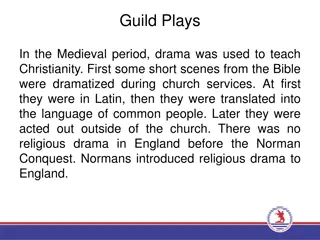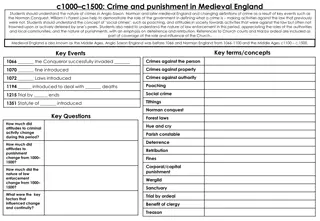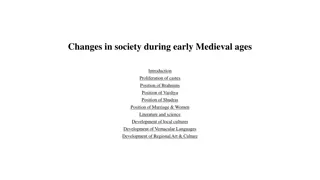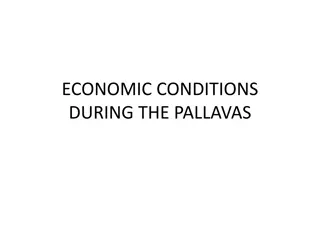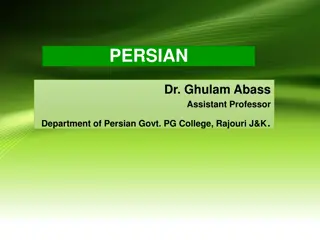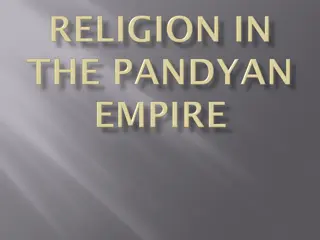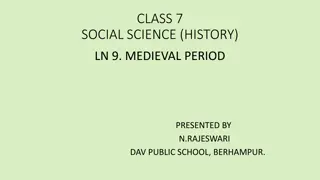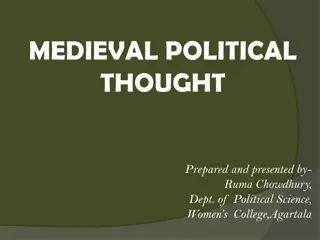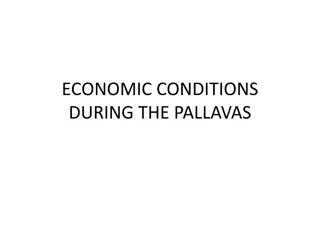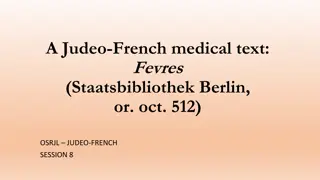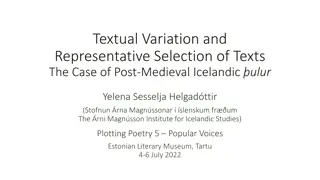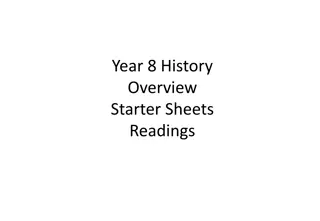Development of Saivism and Vaishnavism in Medieval South India
The medieval period in South India witnessed the rise and expansion of Saivism and Vaishnavism, leading to the construction of many temples dedicated to Lord Siva. While Saivism thrived during the Chola period, Vaishnavism faced challenges but was championed by figures like Nadamuni, Yamunacharriyar, and Ramanuja. Ramanuja, in particular, made significant contributions by advocating inclusivity and radical religious changes despite facing opposition. The emergence of sects like Vadakalai further enriched the religious landscape of the region, emphasizing worship practices and theological discourse.
Download Presentation

Please find below an Image/Link to download the presentation.
The content on the website is provided AS IS for your information and personal use only. It may not be sold, licensed, or shared on other websites without obtaining consent from the author. Download presentation by click this link. If you encounter any issues during the download, it is possible that the publisher has removed the file from their server.
E N D
Presentation Transcript
INTRODUCTION The temple and the Matha were the two great gifts of medieval Hinduism to south India. They expanded gradually and consolidated their position in Tamilnadu. Regularized the activities of the people. Saivism and Vaishnavism are the two branches Hinduism Development of various religious philosophies.
SAIVISM Chola period was the age of south Indian Saivism and Vaishnavism. Most of the temples were constructed and dedicated to Lord Siva. Queens were also showed their interest in Hinduism. ex:Sembaiyan Mahadevi and Vanavan Mahadevie etc.,
Saiva saints dedicated their life to Saivism. The hymns of the saints were sung in the temple. It penetrated into their hearts without much strain. Cordial relation.
VAISHNAVISM Vaishnavism and Saivism were the two eyes of Hinduism. But in Chola period equal treatment was not given to Vaishnavism. But in limited temples. Faced many problems under Cholas.
NADAMUNI Vaishnavist, who worshipped Thirumal,were known as Achchariyas. Important contribution of Nadamuni was Nalayira-Divya prabandam. New branch established by him was known as Sri Vaishnavism.
YAMUNACHARRIYAR His sucessor was Yamunacharriyar. Deep involvement in Vaishnavism. Defeated scholar in the court of Chola king. Honoured by title Alavanthar.
RAMANUJA He was born in 1010.A.D, at Sriperumbudur in chengalpet district. Vaishnavism faced many problems during his time. Many religious works done when he was in Srirangam. He attracted common people.
He opened gate of Hindu temples to the untouchable and made radical religious changes. Rajendra condemned his activities and punished severely. He became a Martyr to his Faith.
VADAKALAI SECT Founder oF this sect was Vedantadesika. Kanchipiram was the headquarter of vadakali. He composed 95 works in sanskrit and 25 in tamil. Ring bells doing workship.
TENKALAI SECT Leader oh the sect was Manavala Mahamuni. He was born in 1370 A.D. He constructed a hall of discussion called TirumalaiAlvar Mandapa mainly to preach Tenkalai doctrine. Srirangam was headquarters. Equality between Brahmins and Non -Brahmins before god. They avoided ringing bell at the time of worship.
SAIVA-VAISHNAVA CONFLICT There was cordial relation between them in Chols history. Some places, the Saiva and Vaishnava temples were constructed very closely. Vaishnava image in Saiva temple and Siva image in Vaishnava temple were erected. Later these religions abused each other. Saivists were instructed not to mingle with Vaishanavists.
MADAMS The Madams were constructed for the religious purposes.. Religious meeting and conference held in Madams. They used as educational purposes. Certain occasions, it supplied salt, water and light freely to travellers.
AMMANKOVIL It was not new innovation of the Chola period. It was famous since the Sangam period. Constructing temples for Mother Goddesses was popular since Rajaraja I. Separate places were provided for Amman in Saiva and Vaishnava temples. It was a sign of protection from evils.
NAVAGRAHA WORSHIP It became prominent in Tamilnadu during Chola period. It became popular and separate temples was constructed for worship. Kulottunga I provided facilities for arrangements of a festival.






